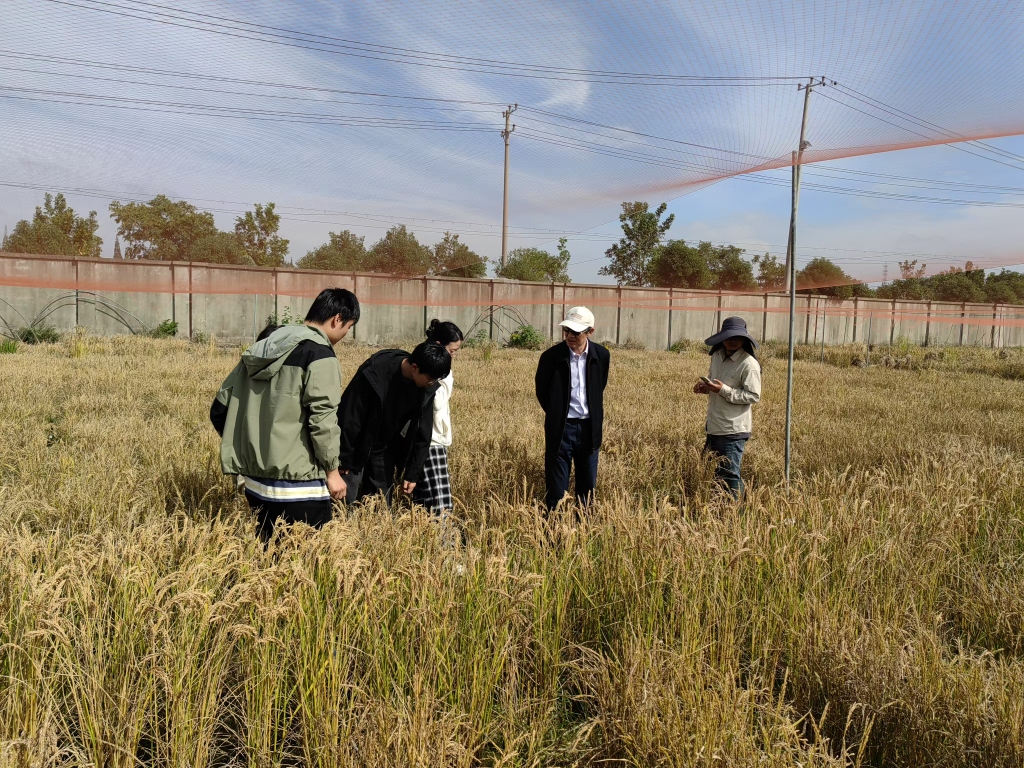

Academician Chen Xiaoya (second from right) of the Chenshan Scientific Research Center of the Center for Excellence in Molecular Plant Sciences of the Chinese Academy of Sciences and his team members observe new rice germplasm in the field
As we age, our body's ability to synthesize the fat-soluble antioxidant coenzyme Q10, which is needed for health, especially heart health, gradually decreases, and additional supplementation is needed. However, rice and other grains naturally contain mainly coenzyme Q9 . Recently, Chinese scientists have made a new breakthrough in the field of crop nutrition fortification : they have cultivated a new rice germplasm that can synthesize coenzyme Q10. Eating this rice can supplement nutrients that are beneficial to heart health.
On February 14, the relevant paper was published in the international authoritative journal Cell, titled "Design of CoQ10 crops based on evolutionary history."
The research was carried out by the team of Academician Chen Xiaoya from the Chenshan Scientific Research Center, Center for Excellence in Molecular Plant Sciences, Chinese Academy of Sciences, and the team of Gao Caixia from the Institute of Genetics and Developmental Biology, Chinese Academy of Sciences.
Thanks to the rich plant resources of Shanghai Chenshan Botanical Garden, the research team collected 134 plant samples from 67 families, including mosses, lycopods, ferns, gymnosperms and angiosperms.
Combining the evolutionary analysis of the amino acid sequences of CoQ1, the coenzyme Q side chain synthetase of more than 1,000 terrestrial plants, and machine learning , the research team finally identified the five amino acid sites that determine the chain length. Through precise editing, the researchers created rice that can mainly synthesize coenzyme Q10. Coenzyme Q10 in its leaves and grains accounts for 75% of the total coenzyme Q, and coenzyme Q10 in grains reaches 5μg/g, and has no effect on rice yield.

Evolution of plant coenzyme Q species and related amino acids
Xu Jingjing, co-first author of the paper and associate researcher at Shanghai Chenshan Botanical Garden, said that previous studies have shown that coenzyme Q10 is relatively stable during heating , and steaming and boiling will not affect it, while frying will cause a small amount of loss. If people eat rice made from this newly created rice on a daily basis, they can supplement about 1 to 2 mg of coenzyme Q10 every day. The coenzyme Q10 we consume from meat every day is about 2 to 3 mg. Therefore, the coenzyme Q10 content of the newly created rice is close to the level of meat, which can provide an effective nutritional supplement for the daily diet.
Zhao Qing, a researcher at Shanghai Chenshan Botanical Garden, told The Paper that he believes the study follows the evolutionary laws of plants over millions of years, finds the code for transforming plants, and successfully creates new species, which is not only suitable for the individual case of coenzyme Q, but also provides a general methodology . "Synthetic biology is about learning from nature ."
The research results provide a model for using big data and artificial intelligence (AI) to accurately transform crop traits and create high-nutrition quality agricultural products. Currently, similar research has also made important progress in wheat .

Academician Chen Xiaoya's team at Chenshan Scientific Research Center, Center for Excellence in Molecular Plant Sciences, Chinese Academy of Sciences


